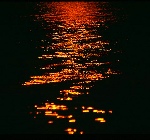Using Teleconverters
teleconvertors (also called tele-extenders, multipliers, doublers or simply convertors) ares small lenses that you put between your camera and another lens.
They basically multiply the focal length of any lens attached to them by a certain factor (most commonly: 1.4, 1.7, 2.0).
So, if you combine a 2* converter with your 300 mm lens you have a 600 mm tele!
Enough to capture a small bird on a tree or a wildlife image.
The convertor itself is very small and weighs next to nothing.
Very practical. 600 or 800 mm lenses are very expensive and quite heavy.
So, if there wasn’t any drawback, why are those lenses available anymore?
The answer is simple:
quality usually isn’t quite as good as with a strong tele. Usually, tele converters are calculated for use with a large number of unknown lenses, while a stronger lens doesn’t have to compromise in this respect.
A 600 mm tele lens is optimised for this focal length and nothing else.
There also is a second drawback. light. Imagine that you have 1:4.0 300 mm lens.
So your initial aperture is 4.0. Not bad actually.
Attaching a 2* converter you effectively get a 1:8.0 600 mm lens. Think of hand-holding a shot with this? No way! Conventional wisdom has it that you need an exposure of 1/600 (or less) to avoid camera shake and you’ll rarely have enough light to combine this with an aperture of 8.0.
There even are 3* extenders, - they’d give you an initial aperture of 12...
That would be too much for just about any autofocus system available today!
Having said this, a converter may come in really handy when travelling. If you use it from a tripod, you can take shots that you couldn’t take without it.
Even if they lack a bit contrast, it’s better to have them than nothing!
Remember: it’s best to use a fast lens with a converter - a 400 mm 1:2.8 lens with a 1.4 converter gives you 560 mm 1:3.92. Quite decent values and you are likely to get a good result.
Also prime (not zoom) lenses usually work better with a converter than zoom lenses.
Also, many people report that using a converter of the same brand as your camera may be better than using a no-name extender.
Quite possible: after all, converters are lenses and glass quality plays a major role!
By the way: macro extension tubes normally do not contain any glass elements, they just work by increasing the distance between the camera and the lens. But this is a different matter...

